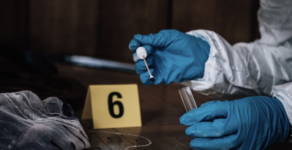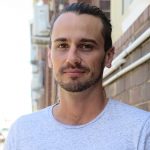Forensic Experts: Error, Bias, Incompetence and Criminality

The forensic ‘expert’ that supposedly melds cutting-edge science to assist in criminal investigations is often romanticised in popular culture.
But the reality is that forensic scientists are human and make honest mistakes, can be biased towards those who pay them to provide reports and give testimony, and can even be incompetent or downright criminal.
To illustrate the latter, here are two high-profile examples of why – contrary to what movies and television shows might have us believe – forensic experts, their reports and the material upon which they base those reports must never be taken as gospel, but questioned, analysed and contested where appropriate – which, by the way, is the job of a good criminal lawyer.
The Unqualified Pathologist
Earlier this year, the Channel 9 television programme Under Investigation presented an exposé on the questionable findings of Dr Colin Manock, who was South Australia’s chief forensic pathologist from 1968 to 1995.
A forensic pathologist assists coroners, police and courts to resolve critical medical issues, including causes of death, the circumstances in which deaths occurred, how injuries might have been caused and the identity of the deceased.
In his time as a leading forensic expert in SA, Manock helped secure more than 400 convictions, and performed approximately 10,000 autopsies.
However, there are serious concerns about the quality of Manock’s forensic opinion during this time. Although a medical doctor, Manock received no formal training in forensic pathology or histopathology.
In 1981, Emily Perry was convicted of two counts of attempted murder of her husband, Ken Perry, by tainting his food with lead and arsenic. Dr Manock gave evidence supporting the narrative that Perry was a “black widow” poisoning her husband.
However, on appeal to the High Court it was noted that Mr Perry may in fact have been poisoned by environmental contamination in his workshop. Dr Manock did not examine Mr Perry’s workshop, and his findings were found to be purely speculative.
Justice Murphy noted in the case that Dr Manock’s forensic opinion at trial was “not fit to be taken into consideration”.
A new trial was ordered in 1982, with prosecutors abandoning the case soon after.
In 2014, the conviction of Henry Keogh for the murder of his fiancé was also overturned largely because Manock’s forensic opinion during the 1995 trial was inaccurate.
Manock claimed that Keogh’s fiancé could not have accidentally drowned in her bathtub on the basis that the body appeared that she was held underwater at the time.
This finding was based on unreliable indicators insufficient to determining actual cause of death.
Legal and forensic experts have also highlighted a number of other potential wrongful convictions which relied upon the forensic opinion on Dr Manock, including:
- The 1971 conviction of Frits Van Beelan, for the murder of a 15-year-old girl largely based on an unreliable and unscientific estimation of time of death.
- The 1985 conviction of Derek Bromley, an Aboriginal man, along with a co-accused for the murder of a man found floating in Adelaide’s River Torrens. Dr Manock had given evidence that the deceased was injured before drowning, an opinion questioned by many independent forensic experts.
Various “accidental death” or “natural causes” findings Dr Manock have also been proven incorrect on review.
Dr Manock’s lengthy history of forensic misconduct has led many legal experts to call for a Royal Commission to investigate the state’s failures for allowing fault forensic medical evidence to be presented in criminal trials.
Queensland Forensic DNA Scandal
A more recent example of forensic misconduct can be found in the findings of the Commission of Inquiry in Queensland over changes to DNA profile analysis within the Health Forensic and Scientific Services (QHFSS).
In 2018, the QHFSS instituted a protocol of excluding samples sent into the laboratory for forensic DNA analysis if less than 0.001 ng/uL of viable DNA was found in the sample. Samples under the cut-off point were reported as either “no DNA detected” or “DNA insufficient for further processing”.
However, the Commission of Inquiry found that there were techniques which could amplify and analysis DNA evidence at much lower concentrations, making the reports “misleading” and “untrue”. Because of this protocol, thousands of criminal cases were denied viable forensic DNA evidence which could both support convictions or exonerate suspects.
The Inquiry found that many scientists within QHFSS had noted their concerns about the new protocol, but these concerns were either downplayed or ignored.
Queensland Health is now undertaking the lengthy process of reviewing and testing DNA samples (if possible) which may have been excluded due to the inaccurate protocol.
Complaints Against Forensic Professionals in NSW
There are two major sources of forensic expertise in NSW:
- The Forensic Evidence & Technical Services Command within NSW Police; and
- The Forensic Medicine and Sciences area of NSW Health Pathology.
If there is suspected misconduct by a forensic expert, this can be raised as an in issue during cross-examination at trial, however that’s unlikely to deal with systemic issues of incompetence or bias.
For forensic misconduct within NSW Police, the first means of making a complaint is an “internal complaint” within NSW Police. If this is not adequately responded to (which is commonly the case) a second complaint can be made to the Law Enforcement Conduct Commission (the LECC). The LECC however is notoriously under resourced and slow to respond to complaints.
A similar two-stage process exists for complaints about the forensic experts within NSW Health Pathology. An internal complaint can be made to attempt to address concerns, and a second complaint can be made to the Health Care Complaints Commission for objective oversight.
Most forensic practitioners in Australia are also members of the Australian & New Zealand Forensic Science Society, which has a Code of Professional Practice for forensic professionals in Australia. A final option to raise concerns is to contact the Society about concerns of its membership.






